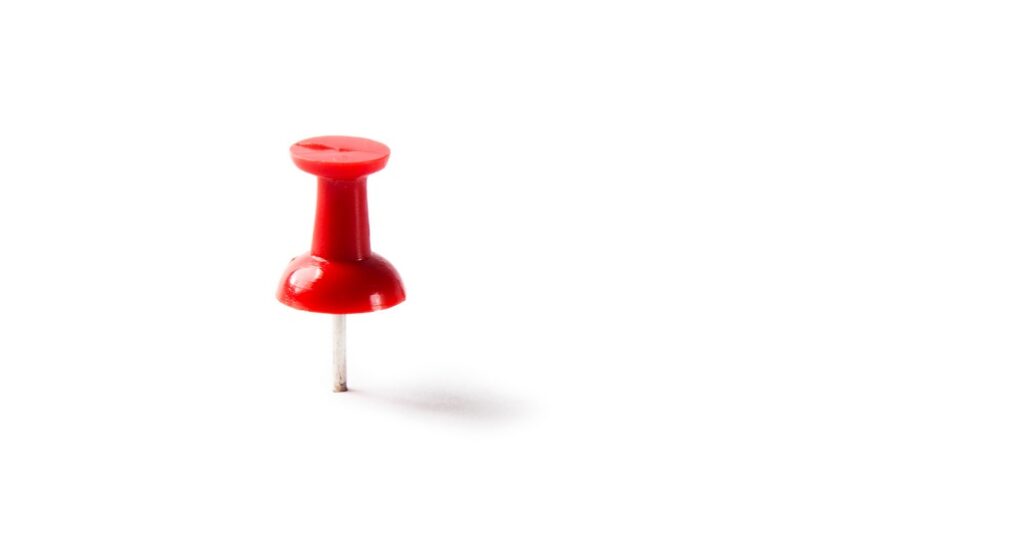
Categories:
Ahh, Pinterest – the lone wolf social media platform that’s often overlooked but not to be underestimated. Unlike super-social cousins, Facebook, Instagram and Twitter, Pinterest isn’t typically a platform where people engage – at least not conversationally. Pinterest’s focus, rather, is on lifestyle planning and organization. Think, aspirational. Most users are pinning items NOW to act on them later (or simply curate an image they’d like to portray). They want to be inspired by creative hacks and pretty images. Did I mention pretty images?
I’ve been surprised by some unusual brands and organizations (e.g. banks, transportation) that have done well on Pinterest even while others have fallen short despite their seemingly perfect fit (e.g. food and fashion brands). Recipes, DIY, home improvement, and fashion tend to be the top performing categories within the Pinterest space. Whether or not you fall into these categories, these five items listed below are ‘must-haves’ if you want your Pinterest strategy to take off.
- Have a Pinterest-friendly website. Remember, users pin now to use LATER. So, if a user is on your website and sees something they love, make sure they have an easy way to bookmark it. All images on your website should be Pinterest friendly, even if you don’t have a Pinterest account for your brand. A great way to test the waters as to whether a Pinterest account is worth it is to add Pinterest tags to your website images and track how often they’re being pinned. Fun fact, Pinterest is the #2 referral site for social media traffic to the web. For tips on how to add Pinterest tags to your website images, visit Pinterest’s widget builder.
- Have great images. Pinterest is a visual network. If you don’t have quality images that grab people’s attention, stop here and reconsider why and how you’re including this platform in your strategy. This is not a place to use copyright-free, blurry, low quality images that you found in the creative commons. Tall, vertical images work best for Pinterest’s interface, and users respond better to images with warmer colors. If there are people in your images, consider cropping or blurring faces. Need help formatting your images for Pinterest? Canva is a free image-editing app for mobile and desktop that has Pinterest templates ready to go.
- Have matching descriptions. And keep them long. Unlike Facebook, Instagram and Twitter where best practices dictate short and sweet captions, on Pinterest it actually pays to be a little wordy. Somewhere between 100-300 words is ideal, including searchable keywords. Not sure how long your text is? Microsoft Word has a built in character counter or try WORDCounter.
- Include links back to your website. Your image catches their attention. Your description reels them in…but where are you sending them? A pin is only as good as the link it directs a user to. Make sure you include a link back to your website (or other reputable websites if you are repining to build your lifestyle boards) with EVERY pin you create. While Pinterest gives you the option to upload images directly to a board – don’t do it. Captions often change as users pin and repin images, so if you upload a photo that doesn’t link anywhere, users down the road won’t be able to locate the product when they’re ready to buy. Note: Pinterest does not like shortened URLS, like bit.ly. However, you can use the long URL with your UTM code attached to help with tracking and understand which pins are driving traffic to your website. Need help building a trackable URL? Try Google’s Campaign URL Builder.
- Have a budget. Advertise with Promoted Pins. Just like all the other social networks, Pinterest is trying to make money. And if you don’t pay, it’s really hard to get noticed. Promoted pins can help you get in front of the right users with preferred placement based on keywords, look-a-like audiences and other targeting you can set up. It is not as granular as Facebook and probably won’t ever be, but you can set up your campaign so that you’re only paying when someone clicks. For more information on promoted pins, you can get started here: Pinterest Ads.
With over 100 million active users, Pinterest should be a no brainer for many food and lifestyle brands (although it’s often passed over in favor of Instagram and other image-centric platforms). Pinterest, however, can be a particularly powerful network to convert users into buyers. However, if you don’t have great images, descriptions, or a place to send users (i.e. optimized website and/or blog), chances are, Pinterest isn’t the right fit for you, at least for now.
About Ethos
Ethos is a multiplatform branding agency that develops and executes integrated marketing campaigns across multiple channels for companies inside and outside of Maine.
At Ethos, we believe that the most effective way to set a company’s marketing course is by finding its core truth – its ethos. We know that once we discover and communicate that core truth, we can truly make a difference for each client’s unique marketing and business objectives.
With Ethos, you get more than a Maine advertising agency. You get a long-term partner whose goals are your goals.
Learn more about the Ethos approach and the work we’ve done for our clients. Want to have a conversation about your brand’s core truth? Contact us!

